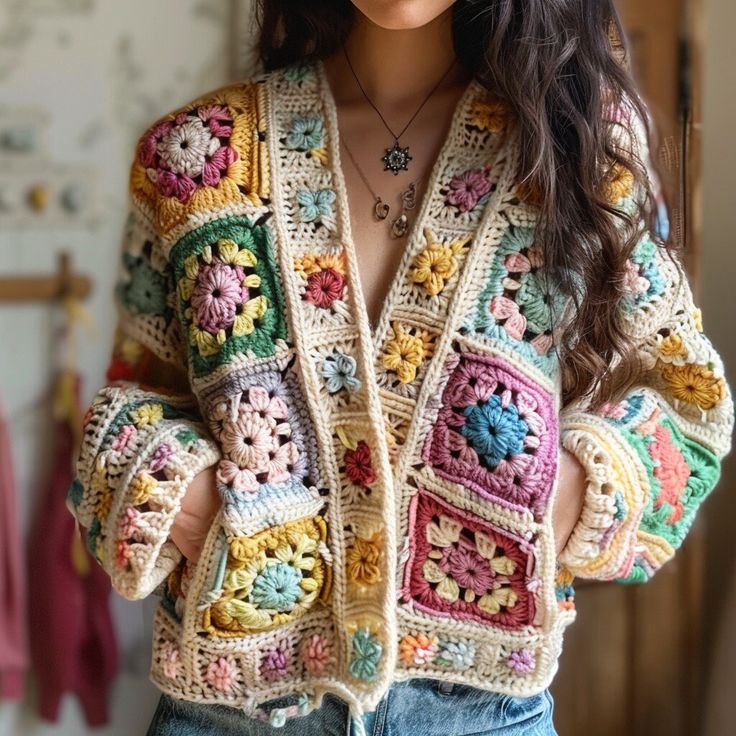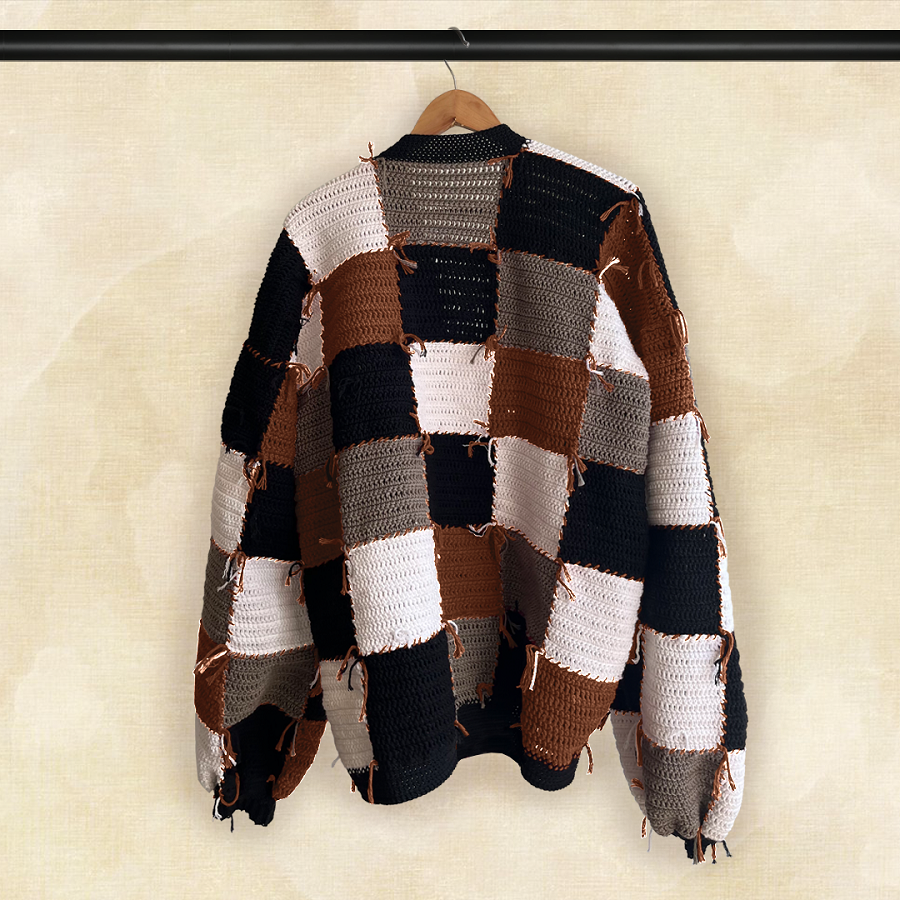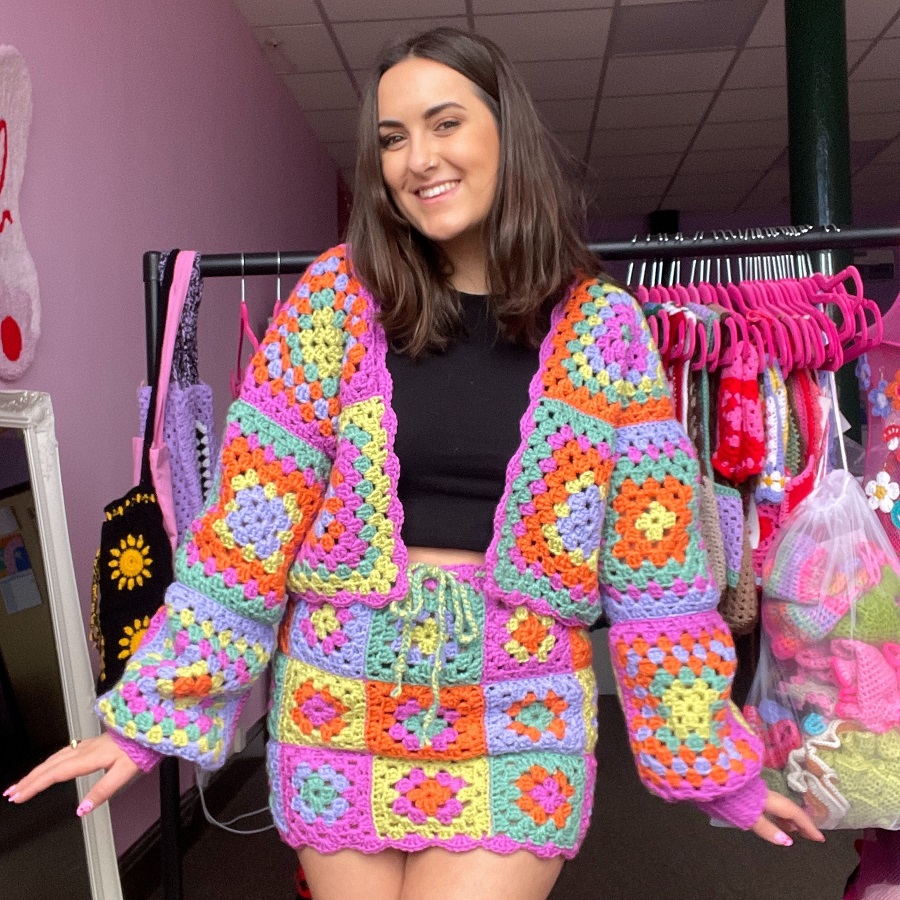Introduction
Crocheting can be a delightful way to express your creativity while crafting cozy and functional garments. One particularly charming item that has gained popularity in recent years is the patchwork cardigan. Not only does it provide warmth during those chilly months, but the vibrant colors and unique designs allow for endless customizations. In this guide, we’ll walk you through a step-by-step crochet pattern to create your very own colorful patchwork cardigan.
Materials Needed
Before we get started, let’s gather all the materials you’ll need for this project:
- Yarn: Choose a variety of worsted-weight yarns in different colors. Typically, you should have at least six to eight colors to create a beautiful patchwork effect. You’ll need about 1500-2000 yards total, depending on your size.
- Crochet Hook: Size H (5.0 mm) or a size that matches your yarn gauge.
- Scissors: To cut your yarn.
- Tapestry Needle: For weaving in the ends.
- Measuring Tape: To ensure proper sizing.
- Blocking Mats (optional): For shaping your finished pieces.
Understanding the Stitches
Before diving into the pattern, it’s essential to be comfortable with some basic crochet stitches. While the entire cardigan will mostly consist of single and double crochet stitches, here’s a quick rundown of the important stitches you’ll be using:
- Chain (ch): The foundation of your crochet pieces.
- Slip Stitch (sl st): Joining two pieces of fabric together.
- Single Crochet (sc): A tight stitch used for creating texture.
- Double Crochet (dc): A taller stitch that is perfect for creating open spaces.
Creating Your Squares
The heart of the patchwork cardigan lies in the colorful squares. Each square will be joined together later to form the body of the cardigan.
Square Instructions:
- Start With a Magic Ring:
- Begin with a slip knot and create a magic ring. This will allow you to crochet tightly in the center.
- Round 1:
- Chain 3 (this counts as your first double crochet) and then work 11 double crochets into the magic ring. Join with a slip stitch to the top of the beginning chain 3. You should have 12 double crochets in total.
- Round 2:
- Chain 3, double crochet in the same stitch. 2 double crochets in the next stitch. Repeat from * to * around. Join with a slip stitch. (You should now have 24 double crochets.)
- Round 3:
- Chain 3, double crochet in the same stitch. Double crochet in the next stitch, 2 double crochet in the next stitch. Repeat from * to * around. Join with a slip stitch. (You should now have 36 double crochets.)
- Assembling Squares:
- Repeat this process with various colors of yarn until you have enough squares. Aim for a total of 20-30 squares for a standard-sized cardigan.
Final Touches on Squares:
End each square with a slip stitch and fasten off the yarn. Be sure to weave in each end using your tapestry needle.
Join the Squares
Once you have all your colorful squares, it’s time to join them together. You can use a slip stitch, whip stitch, or any method you’re comfortable with. Here’s how to do it with the whip stitch:
- Lay Out Your Squares:
- Before joining, lay out your squares in a pleasing arrangement. You want to balance the colors throughout the cardigan for an eye-catching look.
- Joining:
- Hold two squares together, right sides facing each other. Insert your tapestry needle through both squares and pull the yarn through. Repeat this for the remaining sides of the squares.
- Continue this process until all squares are joined into a large rectangular piece.
Create the Sleeves
You will be crocheting two separate sleeves using the same square pattern.
- For Each Sleeve:
- Start with a chain of 24 or adjust according to your desired sleeve width. Repeat the square instructions for each sleeve.
- Aim for 4-5 squares for each sleeve, depending on how wide you want them.
- Joining Sleeves to Body:
- Once the sleeves are finished, attach them to the main body of your cardigan using the same whip stitch technique.
Adding the Edging
To finish off the cardigan, you’ll want to add a border around the open edges:
- Edging Instructions:
- Begin in any corner of the cardigan. Attach your yarn with a slip stitch and chain 1.
- Work a single crochet stitch in each stitch, making sure to put three single crochets in each corner to give it structure and prevent folding.
- Continue this all around the cardigan’s edges.
Final Touches and Blocking
Once your cardigan is assembled, give it a final check:
- Weave in Any Loose Ends:
- Use your tapestry needle to weave all remaining yarn ends into the fabric.
- Block Your Cardigan: (optional)
- For a polished look, lay your cardigan flat on blocking mats and shape it according to your measurements. Lightly spray with water and let it dry.
- Adding Extra Details:
- If desired, you can add buttons, pockets, or other embellishments to make your cardigan uniquely yours.

Why Choose a Patchwork Cardigan?
Patchwork cardigans are an excellent way to express your creativity. The beauty of this style lies in its versatility:
- Color Choices: You can use a myriad of colors, whether you prefer bold, contrasting combinations or subtle, complementary shades.
- Unique Textures: Experiment with different yarn types to play with textures—soft cotton, luxurious wool, or even chunky yarns add distinct features to your cardigan.
- Sustainability: Crochet projects often use leftover yarn from previous projects, making patchwork cardigans a sustainable option for those looking to reduce waste.
- Personalized Style: With countless patterns and designs to choose from, you can create a cardigan that is uniquely yours.
Materials Needed
Before we dive into the actual crocheting process, let’s gather all the materials you’ll need:
Yarn
- Variety of Colors: Opt for 4-6 different colors. Your choice may range from solid to variegated yarns.
- Weight: Choose a yarn weight that you are comfortable working with; worsted weight is a popular choice for cardigans.
Tools
- Crochet Hook: The size of your crochet hook will depend on your yarn weight. A G/6 (4.0 mm) or H/8 (5.0 mm) is commonly used.
- Scissors: For cutting your yarn.
- Tapestry Needle: For weaving in the ends and sewing patches together.
- Measuring Tape: To ensure the correct sizing of your cardigan.
Optional
- Stitch Markers: To keep track of your rounds and prevent each patch from getting confused.
- Blocking Mats: If you want to block your patches for a more polished look.
Selecting Your Pattern
One of the most exciting parts of crochet is choosing the patterns for your patches. There are countless free and paid patterns available online. Consider the following types of patches for your patchwork cardigan:
- Granny Squares: These classic squares can be made in various sizes and configurations.
- Hexagons: Simple and visually appealing; they can create a beautiful honeycomb effect.
- Stripes: Incorporating different colored stripes into rectangular patches can add elegance and continuity.
- Textured Stitches: Use stitches like bobbles, shells, or popcorns to create different textures across your patches.
Step-by-Step Tutorial to Create Your Patchwork Cardigan
Choose Your Patch Designs
Start by selecting at least three different patch designs. For beginners, granny squares are an excellent choice, but feel free to experiment with other stitch patterns too.
Step 2: Crochet Your Patches
- Crochet each patch according to your chosen patterns. Make sure to maintain consistent tension throughout your work.
- Color Changes: You can change colors at the end of each row, creating a beautiful mix of colors across your patches.
Weave in Ends
After completing each patch, make sure to weave in any loose ends to keep your work neat. This can be done with a tapestry needle; simply thread the yarn tail through a few stitches on the back side of the work and cut off the excess.
Block Your Patches
If desired, block your patches using blocking mats and pin them into shape. This helps even out the fabric and ensures that all patches are the same size.
Assemble Your Cardigan
Now it’s time to bring your creation to life. Follow these instructions to assemble your cardigan:
- Lay out your patches in the desired arrangement. Take the time to experiment with the layout until you find one that pleases your eye.
- Sew the patches together using slip stitches or whip stitches. Be careful to align the edges, so your seams are smooth.
- Design Your Cardigan Shape: Decide how many patches will form the front, back, and sleeves. A typical cardigan might require:
- 3-4 patches for the back
- 2 patches for each front side
- 2-3 patches for each sleeve.
- Join the sections together: Once your front, back, and sleeves are assembled, sew them together to form the complete cardigan.
- Finish the Edges: You can add a border around the cardigan to give it a more polished look. A simple single crochet or scalloped edge can enhance the overall design.
Add Buttons or a Closure
If you prefer your cardigan to close, sew on buttons or a clasp. Choose colors that harmonize with your patchwork for a cohesive look.
Final Touches
Take a moment to inspect your work. Weave in any remaining loose ends and block your cardigan for the final time to ensure it achieves the desired shape.

Conclusion
Congratulations! You’ve successfully crafted a colorful patchwork cardigan, perfect for cozying up in or showing off your crochet skills. The beauty of this project is that it can be customized in endless ways – from color combinations to sizes, each cardigan will be one-of-a-kind. Enjoy wearing your handmade piece or gifting it to a loved one, and happy crocheting!
